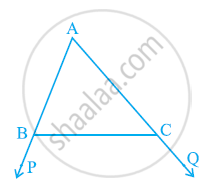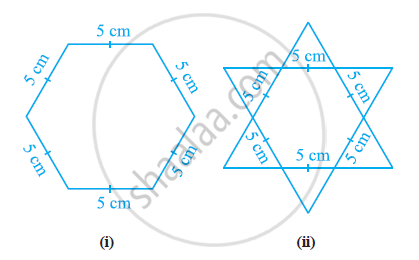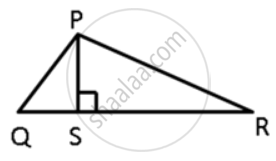Advertisements
Advertisements
प्रश्न
ΔABC in a isosceles triangle with AB = AC. D is a point on BC produced. ED intersects AB at E and AC at F. Prove that AF > AE.
उत्तर
∠AEF > ∠ABC ...(Exterior angle property)
∠AEF = ∠DFC
∠ACB > ∠DFC ...(Exterior angle property)
⇒ ∠ACB > ∠AFE
Since AB = AC
⇒ ∠ACB = ∠ABC
So, ∠ABC > ∠AFE
⇒ ∠AEF > ∠ABC > ∠AFE
that is ∠AEF > ∠AFE
⇒ AF > AE.
APPEARS IN
संबंधित प्रश्न
In the given figure sides AB and AC of ΔABC are extended to points P and Q respectively. Also, ∠PBC < ∠QCB. Show that AC > AB.

Show that of all line segments drawn from a given point not on it, the perpendicular line segment is the shortest.
Complete the hexagonal and star shaped rangolies (see the given figures) by filling them with as many equilateral triangles of side 1 cm as you can. Count the number of triangles in each case. Which has more triangles?

Name the greatest and the smallest sides in the following triangles:
ΔABC, ∠ = 56°, ∠B = 64° and ∠C = 60°.
Arrange the sides of the following triangles in an ascending order:
ΔDEF, ∠D = 38°, ∠E = 58°.
Name the smallest angle in each of these triangles:
In ΔABC, AB = 6.2cm, BC = 5.6cm and AC = 4.2cm
Name the smallest angle in each of these triangles:
In ΔPQR, PQ = 8.3cm, QR = 5.4cm and PR = 7.2cm
In ΔPQR, PS ⊥ QR ; prove that: PQ > QS and PR > PS
In ΔPQR is a triangle and S is any point in its interior. Prove that SQ + SR < PQ + PR.
Prove that in an isosceles triangle any of its equal sides is greater than the straight line joining the vertex to any point on the base of the triangle.
